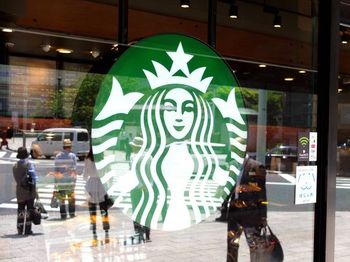
On September 24th, American chain Starbucks announced its plans to make Starbucks Japan a wholly-owned subsidiary. How did general stockholders react?
Many shareholders feel “left in the lurch.” There are 110,000 of us, and at this year’s general meeting, 7,000 people were in attendance. Many people want to form a connection with Starbucks by holding shares in the company. I, too, am disappointed [at Starbucks Japan being delisted as a result of its becoming a subsidiary of the parent company].
However, this was not for us to decide. The move, based on the opinions of the two firms [Starbucks and Sazaby League], was deemed adequate by a third-party panel.
Delisting the company amidst growing results at Starbucks Japan.
A key issue is the fact that, when the company was first listed on JASDAQ, it had formed a comprehensive 20-year agreement slated to expire in 2021. This also appears in the company’s annual reports. This is a key point that cannot be ignored – that the two companies soon had to begin thinking about whether to continue their relationship.
To tell the truth, the question of what to decide and when to decide it largely comes down to Sazaby and Starbucks. There are many aspects of this contractual agreement that we cannot, by definition, know about, so there is nothing for it but to solemnly carry on with what the majority shareholders [combined, the two companies own 80% of Starbucks Japan] decided.
What are Starbucks’ goals with making Starbucks Japan a subsidiary?
It has been three years since I became CEO. Over that time, the share price grew threefold. Our total assets also grew considerably. A few years ago, the company could have been made a wholly-owned subsidiary for ¥40B, but [following the stock’s growth] Starbucks will today have to pay close to ¥100B.
At a meeting of the board for Starbucks US, it was deemed that the company had such certain prospects that even this outlay was appropriate. Considered in that light, this means that rendering this decision in the first place would be impossible without the certitude that Starbucks Japan will grow even more than it has already.
Will this have an impact on strategy for future shop openings?
What was emphasized to employees was that, if we treat the 1,000 stores as chapter one, chapter two is getting ready to begin. Our mid-term plan thus far has been going beyond 1,000 stores – but we are already there.
We raised our targets for store openings and upgraded our infrastructure to make this possible. This fiscal year, we look set to once again exceed our plans [70 shops]. There are no negative aspects to the current shop strategy. In 2015, we will also be opening a shop in Tottori for the first time, the only area we had not reached before.
In terms of whether this means a total conquest of Japan, we still hear voices saying, “You don’t have shops in Edogawa-ku or Arakawa-ku in Tokyo.” (laughs) There is still ample potential for the future. We feel palpable feedback and opportunity that goes beyond simple figures like 1,500 or 2,000 shops. Even local municipalities have expressed an interest in getting involved.
The founding CEO of the company, Yuji Tsunoda, will step down from his post as director.
Again, this, too, is related to closing our first chapter and beginning a new one. Mr. Tsunoda brought Starbucks to Japan, and he is on close terms with Howard Schultz, CEO of Starbucks proper, who refers to him as “Yuji-san”. Starbucks has clearly stated that it wants to continue to maintain a relationship of gratitude towards and friendship with Sazaby.
Up to now, I’ve worked in conjunction with Yuji-san, borrowing 120% of his energy while bearing responsibility for decisions myself. Yuji-san, for his part, strongly wanted to enhance and increase the brand’s presence.
Since we’ve worked together as a unit, I do have a touch of sadness at seeing him leave. However, he is seventy-three years old, and I am sixty-seven. It doesn’t make sense for a company to be led by geezers forever. We want to see Starbucks Japan off until it comes of age at twenty years.
How long will you continue as CEO?
I came to Starbucks Japan when the company was fifteen years old. Just like with human beings, this age was a major turning point for the company. It was tall and gangly, and it still lacked muscle. It didn’t have its own consciousness or independence. Starbucks was just a teenager when I came.
Now it has grown tremendously and is on its road to becoming a full-fledged adult. I want to see Starbucks Japan through until it reaches full adulthood at age 20 [Japanese age of majority is 20]. We are moving in that direction and a range of plans are being put into action.
I want to make the company even more exciting and interesting. I realize that, for general stockholders, being forced to discontinue that relationship is a bitter experience, and that you may be inconvenienced. However, I hope we can broadcast the message that we will be very grateful if you continue being fans and supporters of the company – we need your help.

